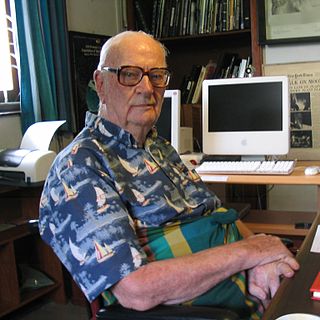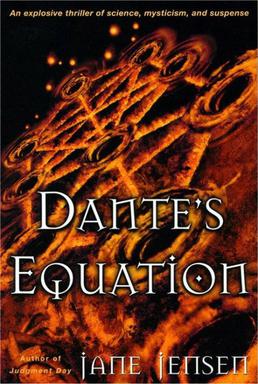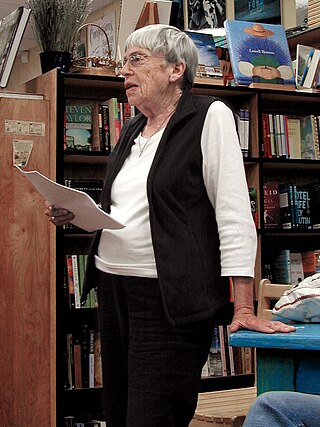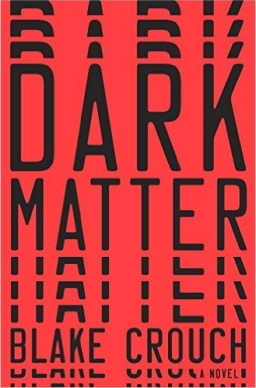
Hard science fiction is a category of science fiction characterized by concern for scientific accuracy and logic. The term was first used in print in 1957 by P. Schuyler Miller in a review of John W. Campbell's Islands of Space in the November issue of Astounding Science Fiction. The complementary term soft science fiction, formed by analogy to the popular distinction between the "hard" (natural) and "soft" (social) sciences, first appeared in the late 1970s. Though there are examples generally considered as "hard" science fiction such as Isaac Asimov's Foundation series, built on mathematical sociology, science fiction critic Gary Westfahl argues that while neither term is part of a rigorous taxonomy, they are approximate ways of characterizing stories that reviewers and commentators have found useful.

Physics is the natural science of matter, involving the study of matter, its fundamental constituents, its motion and behavior through space and time, and the related entities of energy and force. Physics is one of the most fundamental scientific disciplines. A scientist who specializes in the field of physics is called a physicist.

Gregory Benford is an American science fiction author and astrophysicist who is professor emeritus at the department of physics and astronomy at the University of California, Irvine. He is a contributing editor of Reason magazine.

Charles Sheffield, was an English-born mathematician, physicist and science-fiction writer who served as a President of the Science Fiction and Fantasy Writers of America and of the American Astronautical Society.

Forever Peace is a 1997 science fiction novel by Joe Haldeman. It won the Nebula Award, Hugo Award and John W. Campbell Memorial Award in 1998.

Einstein's Bridge is a hard science fiction novel by physicist and science fiction writer John G. Cramer.

John Gleason Cramer Jr. is a professor emeritus of physics at the University of Washington in Seattle, Washington, known for his development of the transactional interpretation of quantum mechanics. He has been an active participant with the STAR experiment at the Relativistic Heavy Ion Collider (RHIC) at Brookhaven National Laboratory, and the particle accelerator at CERN in Geneva, Switzerland.

David Geddes Hartwell was an American critic, publisher, and editor of thousands of science fiction and fantasy novels. He was best known for work with Signet, Pocket, and Tor Books publishers. He was also noted as an award-winning editor of anthologies. The Encyclopedia of Science Fiction describes him as "perhaps the single most influential book editor of the past forty years in the American [science fiction] publishing world".
Rubber science is a science fiction term describing a quasi-scientific explanation for an aspect of a science fiction setting. Rubber science explanations are fictional but convincing enough to avoid upsetting the suspension of disbelief. Rubber science is a feature of most genres of science fiction, with the exception of hard science fiction.

Dante's Equation is a novel by American writer Jane Jensen, published in 2003. It was nominated for the Philip K. Dick Award and received a Special Citation for it.

The hypothetical particles tachyons, defined through being faster than light, have inspired many occurrences in fiction. In general, tachyons are a standby mechanism upon which many science fiction authors rely to establish faster-than-light communication, with or without reference to causality issues, as well as a means to achieve faster-than-light travel. Science writer Sidney Perkowitz commented "that the very word "tachyon," because of its unusual Greek-origin spelling and engagingly catchy hard "ch" sound, lends a certain "science-ness" or "science coolness to fiction." Starting in the 1970s, tachyons were used in science-fiction to present a seemingly-plausible explanation for time travel and communication through time. Peter Nicholls, in The Encyclopedia of Science Fiction, describes Gregory Benford's Timescape (1980) as the first work to use tachyons to this effect "with some care", where scientists send a message to the past trying to change history. Glen Cook's 1985 novel A Matter of Time features a much less stringently described "tachyon generator" to "transmit [both to the past and] to the far future". Uses of the concept for space travel appeared in association with "the Asgard, the benevolent alien race in the Stargate SG-1 television series (1997–2007)", and in the 2001 film K-Pax, which coined the term "tachyonic speeds" for "multiples of light speed". An "unabashed" use appeared already in 1969, where "Bob Shaw's The Palace of Eternity features such delights as a million-ton tachyonic spaceship travelling at 30,000 times the speed of light." In the Star Trek franchise, in addition to facilitating faster-than-light travel, tachyons have been mentioned "for varied purposes, including cloaking a spacecraft, detection" of such cloaking and overcoming defensive shields, which has been regarded as "technobabble" by Mashable contributor Keith Wagstaff: dialogue that implies a scientific explanation, using a term with a real scientific concept behind it, "but really doesn't mean much."
Retrocausality, or backwards causation, is a concept of cause and effect in which an effect precedes its cause in time and so a later event affects an earlier one. In quantum physics, the distinction between cause and effect is not made at the most fundamental level and so time-symmetric systems can be viewed as causal or retrocausal. Philosophical considerations of time travel often address the same issues as retrocausality, as do treatments of the subject in fiction, but the two phenomena are distinct.
Kathryn Elizabeth Cramer is an American science fiction writer, editor, and literary critic.

To the Stars is a science fiction novel by American writer L. Ron Hubbard. The novel's story is set in a dystopian future, and chronicles the experiences of protagonist Alan Corday aboard a starship called the Hound of Heaven as he copes with the travails of time dilation from traveling at near light speed. Corday is kidnapped by the ship's captain and forced to become a member of their crew, and when he next returns to Earth his fiancée has aged and barely remembers him. He becomes accustomed to life aboard the ship, and when the captain dies Corday assumes command.

City at the End of Time is a 2008 science fiction novel by American writer Greg Bear. It was published in August 2008 by Del Rey in the United States, and Gollancz in the United Kingdom. The story follows three drifters in present-day Seattle who are tormented by strange dreams of the Kalpa, a city one hundred trillion years in the future. The Kalpa is attempting to ward off the Typhon, an inexplicable entity that has consumed the rest of the ancient universe and broken down the laws of physics.

Soft science fiction, or soft SF, is a category of science fiction with two different definitions, in contrast to hard science fiction. It explores the "soft" sciences, as opposed to the "hard" sciences. It can also refer to science fiction which prioritizes human emotions over scientific accuracy or plausibility.
Quantum fiction is a genre of speculative fiction that reflects modern experience of the material world and reality as influenced by quantum theory and new principles in quantum physics. It is characterized by the use of an element in quantum mechanics as a storytelling device. The genre is not necessarily science-themed, and blurs the line separating science fiction and fantasy into a broad scope of mainstream literature that transcends the mechanical model of science and involves the fantasy of human perception or imagination as realistic components affecting the everyday physical world.

Fashion, Faith, and Fantasy in the New Physics of the Universe is a book by mathematical physicist Roger Penrose, released in September 2016. The book is based on his lectures that he gave at Princeton University in 2003.

Dark Matter is a thriller science fiction novel by American writer Blake Crouch, first published in the United States in July 2016 by the Crown Publishing Group. The story is about a physicist who is kidnapped and sent to a parallel universe in which another version of his life unfolds because of a different choice he made fifteen years previously. The book draws on the many-worlds interpretation of quantum mechanics which posits that every possible outcome of every event creates a new universe or world that runs parallel to our own.
The Arrows of Time is a hard science-fiction novel by Australian author Greg Egan and the third part of the Orthogonal trilogy. The novel was published by Gollancz on 21 November 2013 with a cover art by Greg Egan and by Night Shade Books on 5 August 2014 with a cover art by Cody Tilson. The novel describes the return journey of the generation ship Peerless, which has been launched in The Clockwork Rocket and traveled into the void in The Eternal Flame, and the reverse enabling the construction of a device to receive messages from the own future as well as the journey to a world where time runs in reverse. The universe of the novel is therefore based on a Riemannian instead of a Lorentzian manifold, changing the rules of physics. The details are described by Greg Egan on his website.















